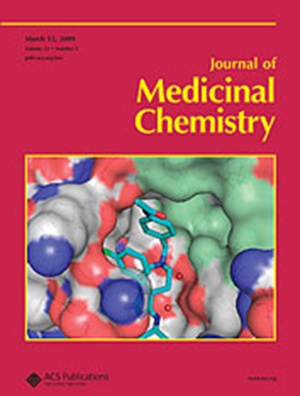IF 6.8
1区 医学
Q1 CHEMISTRY, MEDICINAL
引用次数: 0
摘要
2025 年 2 月 7 日,美国国立卫生研究院(NIH)院长办公室发布了《2024 年 NIH 补助金政策声明补充指南》,其中规定"对于[高等教育机构]的所有现有赠款,追溯到本补充指南发布之日,获奖者须遵守 15%的间接费用率"。(1) 间接费用(IDC)比率的降低大大削减了对卫生研究至关重要的间接费用和管理费用的财政支持。具体而言,IDC 用于实验室空间、科学仪器、研究计算基础设施、安全和法规遵从、研究核心业务和支持人员等设施。它们在维持研究机构方面也发挥着至关重要的作用,这种大幅削减可能导致由 NIH 资助的机构损失数亿美元。其影响是深远的,有可能会扰乱从基础实验室调查到临床试验等广泛的生物医学研究。此外,这些削减的突然性使各机构几乎没有时间进行调整,从而使它们立即陷入财务困境。药物化学界尤其将面临重大挫折。由美国国立卫生研究院资助的学术机构是早期药物发现研究的中心,负责确定新的药物靶点和开拓新的化学实体,这些新的化学实体最终可能成为变革性的疗法。从发现到上市的过程往往取决于学术机构与产业界的合作,这些合作促进了临床试验和监管审批,显示了这些削减将如何产生更大的影响。虽然 IDC 费率下调的全部影响仍不确定,但显然会减缓药物开发的进程,增加为患者提供新药的时间和难度。尽管已提起诉讼并发布了临时限制令,但目前仍不清楚如何以最佳方式应对这些政策变化。(2,3)之前的资助决定已经造成了广泛的不确定性,而进一步的预算限制很可能会加剧这些挑战。然而,长期以来,药物发现一直被认为是一项 "团队运动",(4) 将人们汇聚在一个单一的、多学科的工作团队中,致力于将基础研究转化为改变生命的治疗方法。为了应对这些财政限制,我们的研究界必须倡导为生物医学研究提供弹性支持。这包括确保必要的资金,以促进突破性的科学研究,并通过强有力的教育和培训计划培养下一代科学家。现在,我们比以往任何时候都更需要团结一致,以确保科学进步不受阻碍地继续下去,并确保拯救生命的疗法的发现和开发仍然是国家的优先事项。D.E.H.感谢美国国立卫生研究院国家普通医学科学研究所(National Institute of General Medical Sciences of the NIH)(R35GM155353-01)的慷慨资助。本文引用了 4 篇其他出版物。本文尚未被其他出版物引用。本文章由计算机程序翻译,如有差异,请以英文原文为准。
Drug Discovery and Development Faces an Ominous Future from NIH Indirect Costs Rate Cuts
On February 7, 2025, the Office of the Director of the National Institutes of Health (NIH) issued a Supplemental Guidance to the 2024 NIH Grants Policy Statement, stating: “For all existing grants to [Institutions of Higher Education], retroactive to the date of issuance of this Supplemental Guidance, award recipients are subject to a 15 percent indirect cost rate.” (1) This reduction in the indirect cost (IDC) rate is a considerable cut in financial support for critical overhead and administrative expenses that are essential for health research. Specifically, IDCs are used for facilities such as laboratory space, scientific instruments, research computing infrastructure, safety and regulatory compliance, research core operations, and support staff. They also play a crucial role in sustaining research institutions, and such drastic cuts could lead to the loss of hundreds of millions of dollars for NIH-funded institutions. The implications are profound, threatening to disrupt a wide spectrum of biomedical research, from basic laboratory investigations to clinical trials. Furthermore, the abrupt nature of these cuts leaves institutions with little time to adjust, placing them in immediate financial distress. The medicinal chemistry community, in particular, will face significant setbacks. NIH-funded academic institutions serve as hubs for early stage drug discovery research, identifying novel drug targets and pioneering new chemical entities that may ultimately become transformative therapeutics. The pathway from discovery to market often depends on academic institutions partnering with industry collaborations that facilitate clinical trials and the path toward regulatory approval showing how these cuts will have impacts beyond. While the full impact of these IDC rate reductions remains uncertain, it is evident that they will slow the drug development pipeline, increasing both the time and difficulty of bringing new medicines to patients. At this juncture, it remains unclear how best to navigate these policy changes, despite lawsuits filed and a temporary restraining order. (2,3) Previous funding decisions have already contributed to widespread uncertainty, and further budgetary constraints are likely to exacerbate these challenges. However, drug discovery has long been recognized as a “team sport”, (4) bringing people together in a singular, multidisciplinary workforce dedicated to translating fundamental research into life-changing treatments. In response to these financial constraints, our research community must advocate for resilient support of biomedical research. This includes securing the necessary funding to promote groundbreaking science and fostering the next generation of scientists through robust educational and training programs. Now, more than ever, we must be united to ensure that scientific progress continues unimpeded and that the discovery and development of life-saving therapies remain a national priority. D.E.H. acknowledges generous support from the National Institute of General Medical Sciences of the NIH (R35GM155353-01). This article references 4 other publications. This article has not yet been cited by other publications.
求助全文
通过发布文献求助,成功后即可免费获取论文全文。
去求助
来源期刊

Journal of Medicinal Chemistry
医学-医药化学
CiteScore
4.00
自引率
11.00%
发文量
804
审稿时长
1.9 months
期刊介绍:
The Journal of Medicinal Chemistry is a prestigious biweekly peer-reviewed publication that focuses on the multifaceted field of medicinal chemistry. Since its inception in 1959 as the Journal of Medicinal and Pharmaceutical Chemistry, it has evolved to become a cornerstone in the dissemination of research findings related to the design, synthesis, and development of therapeutic agents.
The Journal of Medicinal Chemistry is recognized for its significant impact in the scientific community, as evidenced by its 2022 impact factor of 7.3. This metric reflects the journal's influence and the importance of its content in shaping the future of drug discovery and development. The journal serves as a vital resource for chemists, pharmacologists, and other researchers interested in the molecular mechanisms of drug action and the optimization of therapeutic compounds.
 求助内容:
求助内容: 应助结果提醒方式:
应助结果提醒方式:


